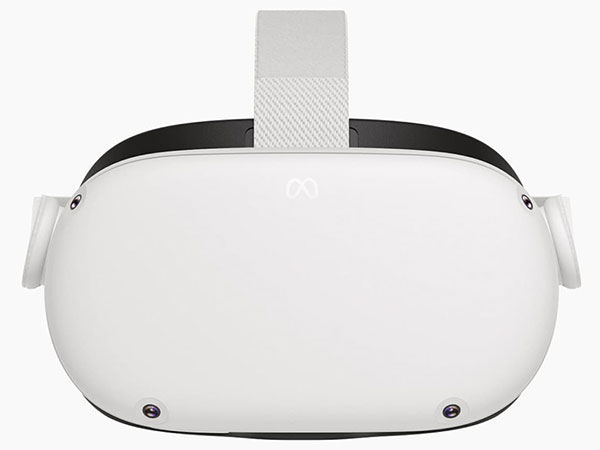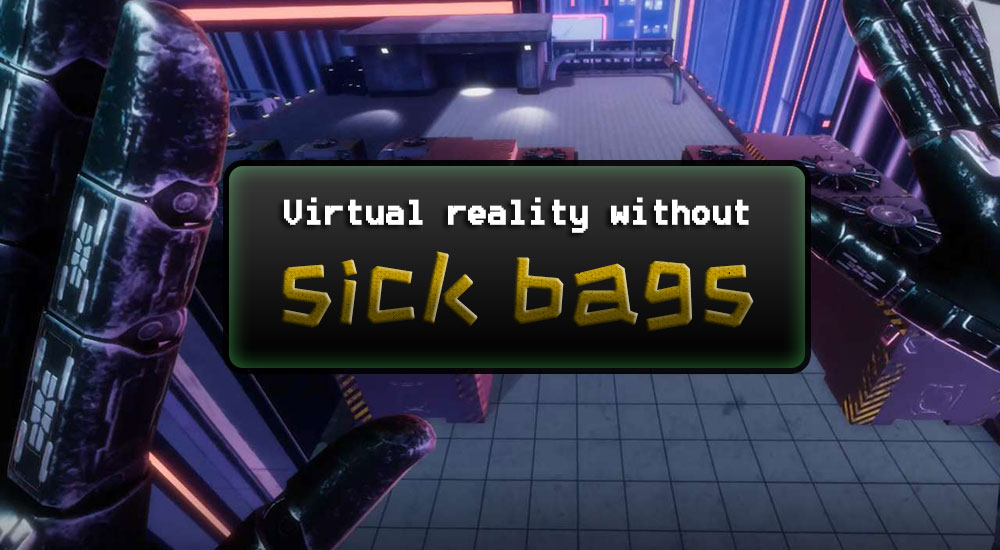VR is becoming increasingly prevalent, with the release of newer, more accessible hardware being announced, such as the Oculus Quest 2 on 13th October 2020, which offers a wireless VR experience while being priced significantly lower than its competitors and predecessors. With that in mind, the next obvious question to that statement would be “What’s a VR headset without games to play?“

VR games have since been released by all sorts of developers, AAA studios and indie developers, ranging from completely original games such as Valve’s critically acclaimed Half Life Alyx, to the team behind the matrix time bending game SUPERHOT’s aptly named, SUPERHOT VR. These games deliver completely different experiences, but what these games share in common is their utilisation of VR. The limitations and uniqueness of VR was considered very carefully when making these games, leading to an overall polished experience that many can pickup and play.
Comparing this to a recent project I worked on in school (check out the gameplay trailer below), the difference is night and day. Motion sickness, or more accurately cybersickness, was a constant challenge during development. A wide variety of things could trigger cybersickness in players, from improper use of movement causing nausea, to performance issues causing framerate to drop below 90 (or become erratic) and causing nausea (once again).
To combat these issues, a large amount of research and work had to be done to deal. This research involved hours of scouring over online articles and videos for a comprehensive list of fixes and implementations. To save time for other aspiring VR developers (and their players immense amounts of pain, nausea and time), here are 3 tips and suggestions for developers to keep in mind when developing a VR game.
0. Table of contents
- Physical and virtual player controls
- Camera controls
- Game feedback
- Other design considerations
- Closing note
1. Physical and virtual player controls
As a developer, you have to take into account the disparity between the players’ movement in game, and the lack of actual movement in real space. The contradictory signals sent by your eyes (which are detecting movement) and your muscles (which are not detecting movement) directly conflict with each other, resulting in a kind of nausea we call cybersickness. This can be likened to the sensation you get on a roller-coaster, or boat, also known as motion sickness.
Despite being a similar sensation, they are not the same — they are triggered by different things. In the short term, this may prevent players from playing your game for any longer than 10 minutes, and drive them away in the long run. To avoid encountering these issues as, here are some things to keep in mind:
- Whenever possible, have the player physically move their body or do a physical gesture for the corresponding action in game. A good example would be a certain moment in Half Life Alyx, known to most as the “Jeff” Level. Below is a video that discusses it and some interesting VR interactions:
- Normal “on foot” movement and VR do not mix well. It simply does not sit well with your body when you are stationary in reality while simultaneously doing flips and running around in a virtual space. A good example of this cybersickness would be in the aforementioned group project I was working on, which is a parkour game in VR.
- The cybersickness can be reduced, but the discrepancy between physical and virtual movements will eventually catch up to the player. Hence, whenever possible, try to use teleportation, or have the player control a vehicle of some sort to circumvent this issue.
2. Camera controls
When developing a VR game, camera controls, perspective and field of view are some important things you have to keep in mind. One of the two senses VR influences primarily is sight (the other is your sense of touch). This means that the player’s camera perspective and control — their main medium of experiencing the game through sight — is extremely important. Some things to avoid, or keep in mind here, are:
- Avoid letting the VR controllers turn the camera. Instead, try utilising the players’ ability to turn and look around physically using the VR headset. If you choose to control your turning with the VR controllers (or some other kind of controller), try introducing irregularity in the turn rate. Uniform rotational displacement is unnatural (i.e. people do not turn their heads at a regular rate of rotation, like robots), and will make players nauseous — as I have learnt from player feedback during the development of my game. Below is an example of uniform turning, followed by an example of non-uniform turning:
- You could add a border or reduce the player’s field of view by adding said borders when turning to help take the player out of the immersion a little to reduce cybersickness, but this may affect the players’ gameplay experience without proper implementation. An example would look like this:
- Avoid floating cameras, as they might give the player vertigo-like symptoms, because their body tells them that they are still standing while their visual apparatus seems to be flying around. Hence, opt for a first-person camera whenever possible. If a third person camera is required, make it more diegetic in some way, such as making the third-person camera viewed through some form of diegetic object, such as a tablet or TV screen. For clarification, this screenshot below from XCOM 2 is a good example to represent what a floating camera is.
3. Game feedback
The game’s feedback helps make use of the players’ other senses, such as touch and hearing. By making use of as many of the player’s senses as possible, nausea can be reduced while the game is being played. This is because activating other senses helps the player orient themselves better in the game world, tricking the player’s brain into perceiving the virtual environment as being real.
A fortunate side effect of this is that this also creates more immersion for the player. Since, y’know, it has the obvious effect of making the game world feel more tangible.
- One way to make use of the sense of touch is through haptic feedback. The most basic example of this is what’s called vibrotactile haptics. This refers to the slight controller rumble you get when firing or taking damage, or when you type messages on your phone. This can be used whenever the player makes a physical interaction with an object to give the sense that they have picked up something, helping ground the players’ senses more in the virtual environment.
- Adding sound effects to your game can often help add to the immersion and reduce nausea. There are many sounds from small movements in our daily lives that we don’t notice, such as when we move our mouse, or when we run our fingers through our hair. The human brain is extremely receptive to the lack of these sounds, as we are used to these sounds (although we don’t notice them). Hence, by making sure these sounds still exist, the players will have one less unusual thing to acclimate themselves to in a VR environment.
4. Other design considerations
Although the tips above have been written as separate sections in this article, they should not be approached as separate from each other when it comes to preventing cybersickness and creating a conducive VR gaming experience. Rather, they should be taken as steps that all work culmulatively. With that in mind, here are some other things that can indirectly contribute to cybersickness in VR games.
- Level design is always important when it comes to making a good game, since it determines so much of the gameplay experience. In VR development, however, it can also help to design the environment and level layout to work with your movement options, and keep the level relatively easy to navigate, as people playing VR often get lost and disoriented easily.
- The art style can also affect the experience — it is especially important for them to be uniform and consistent, to prevent the player from having to distinguish between objects in the game world. With VR already tricking their senses, you don’t want to add more things that can potentially add more confusion to the player as they learn your game.
- Finally, the most important hardware limitation, your framerate. When playing games in VR, regardless of the game, most people recommend having 90 frames per second, as that is generally the minimum number of frames expected or needed to trick the brain into believing they are experiencing an actual environment. Although research has shown that our brain cannot dinstinguish between frame rates above 60, having a frame rate below 90 in a VR context has been shown to cause disorientation, nausea, and other effects. An article that elaborates on this can be found here.
5. Closing note
Although this article explores general solutions to fix cybersickness in VR games, do note that they are not a one-size fits all solution. Depending on the type of game you are making, some solutions may work for you, and some may not.
Ultimately, it is still up to the developer to make sure that the game works and plays well, and lots of playtesting across different audiences is still ultimately what is needed to properly determine the solutions that you should adopt to solve the issue of motion sickness for your game.
Finally, for those of you who are interested, you can download my game here. You can also check out the gameplay trailer below:
Our game runs on most VR headsets, download it here

